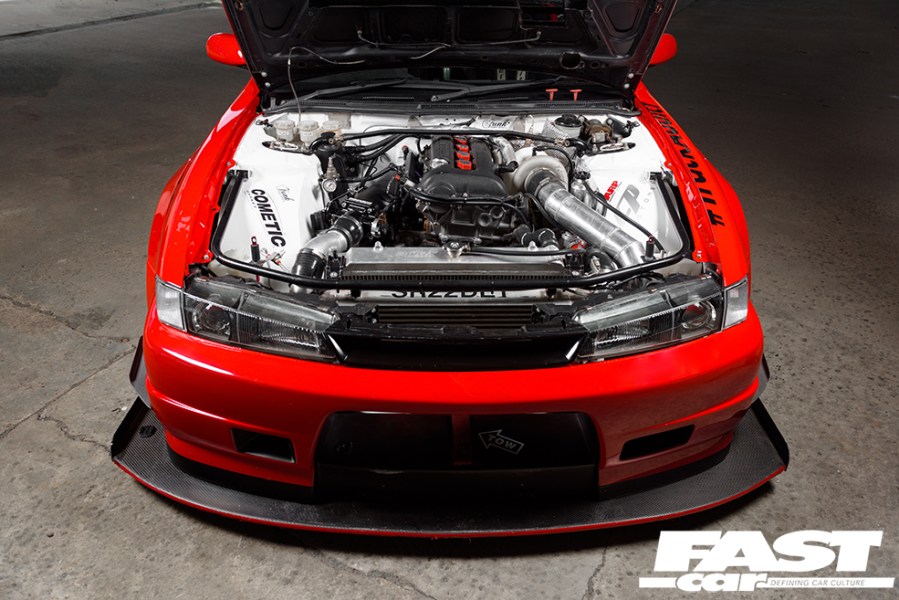Nissan’s best known four cylinder engine has a worldwide car tuning scene behind it. We show you the good, bad points, and how to tune the SR20DET engine.
SR20DET history
Made famous by its use in the RWD S-Body Nissans, the SR20DET has in fact left the factory in a variety of vehicles over the years. It first appeared on some Japanese-only versions of the Bluebird. Shortly after, it appeared in the better known Pulsar/Sunny GTI-R. These were transversely mounted SR20DETs mated to 4WD transmissions. Thanks to being a homologation special for Group A rallying, the GTI-R versions featured various trick parts such as individual throttle bodies and a larger turbocharger.
From 1991 they started appearing in the Nissan S-body cars. The Silvia S13, S14, and S15 all featured the SR20DET until 2002. It was these cars that made the SR20 world famous within the tuning scene.
The most powerful iteration of the SR20 appeared in 2001, at the end of the Silvia lifespan. Nissan released the X-Trail GT, which featured a special SR20VET engine. Many don’t realize this exists, but it’s by far the most powerful factory SR. It makes 276bhp as standard, and comes with the legendary VVL head. The VVL head is considered to be the Nissan equivalent to Hondas VTEC. These were produced right up until 2007, long after any other SR20 powered vehicle was produced.
There were a number of changes to the SR20DET engine over the years. The most notable were the turbo and injector sizes, and three main cylinder head types. However, the fundamentals are the same, they all have absolutely massive potential, and we’re about to show you how to tune one.

The basics of how to tune an SR20DET
First, it’s worth mentioning that while you don’t have to do these upgrades all at once. However, to save hassle and to maximize performance and reliability, we’d suggest they’re all done in one go.
The mods you should consider here are full turbo-back exhaust system, front mount intercooler, uprated fuel pump and colder spark plugs. The final piece of the puzzle is a boost controller to set the boost to around 15psi. This tends to give the SR20DET between 250 and 280 horsepower depending on your overall setup. The later SR20 versions with slightly larger turbos generally make more power.
This level of tune is generally what the standard ECU map and fuel injectors can cope with. It’s also very near the turbo limit for most versions too. This being said, depending on the car, some may handle more boost than others before hitting the fuel cut limiter. In an ideal world, a ‘Stage1’ chip or remap should be added to these initial mods. However, it’s not vital as long as you keep the boost level below the point where you hit fuel cut.
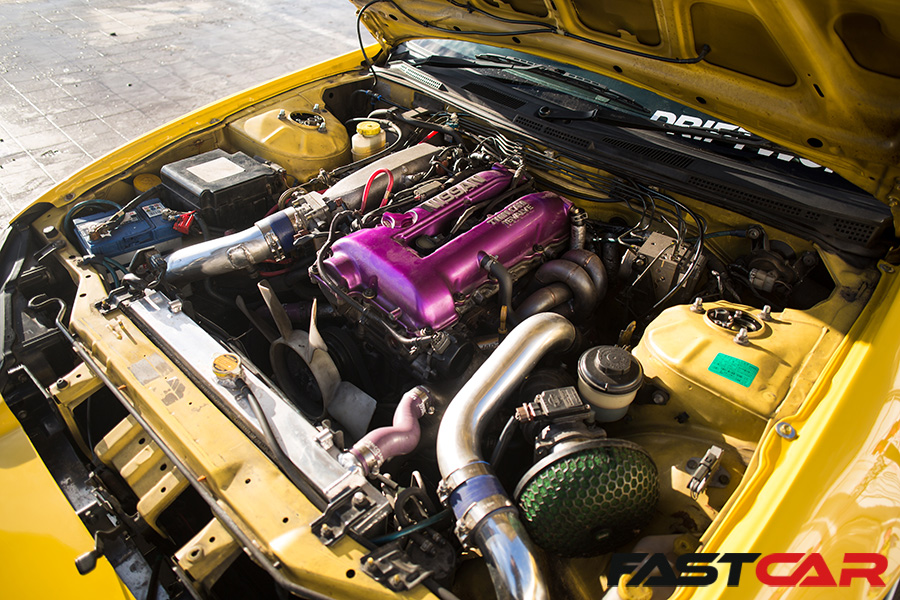
SR20DET intake tuning
While there are plenty of off-the-shelf induction kits for all SR20DET engine vehicles, these kits generally consist of the air filter and an adapter to bolt it to the MAF sensor. If you’re planning on upgrading the MAF to a Z32 or R35 GT-R version, these standard kits won’t fit. As a result, you’ll need to buy an adapter to suit the MAF sensor of your choice.
Upgrading your MAF sensor is vital if planning to go over around 300bhp using the factory-style engine management. At that level, you will be maxing out the standard sensor limit. Changing to the Z32 MAF from a 300ZX is a good upgrade. A better upgrade is an R35 GT-R MAF. This style of MAF is far more accurate, allowing for a better tune. It’s of a compact design that allows you to fit it to any size pipework you wish. Best of all, it’s widely available brand new and for a low price. In fact, most Nissan remapping specialists tend to have full fitting kits available to convert your SR20DET to a R35 GT-R MAF setup.
The ultimate MAF setup is the PMAS HPX-N1 MAF sensor. It is of a similar style to the aforementioned R35 one, but can read massively more for any given housing size. Even with a relatively small 3inch intake pipe, the PMAS one is capable of around 800bhp!
If you’ve chosen to go to a full aftermarket ECU then things are simplified somewhat as the MAF sensor is no longer used. This means your intake setup purely consists of the air filter and the piping. While there are no off-the-shelf kits in that case, it’s a very simple setup that you can tailor perfectly to your needs.

Optimum exhaust options
As with the vast majority of turbocharged engines, the standard SR exhaust is a restriction even at light levels of tune. As the exhaust directly after the turbo tends to have the biggest effect, a full turbo-back exhaust system is vital. The first thing to note is, the exhaust fitment is slightly different on every S-body car. An example would be that most S14 (aka Zenki) exhausts do not correctly fit the slightly later S14a (aka Kouki) even though it looks almost the same. Make note what you’re ordering before you hit the buy button!
Thankfully with SRs being so popular, off-the-shelf 3inch exhaust systems are available from countless manufacturers. You have the option of oval downpipes to increase ground clearance on low cars, flex sections, varying amounts of silencers, and of course lots of tailpipe designs.
Like any engine, beyond around 500bhp, arguably sooner, there are worthwhile gains by going to bigger than a 3inch exhaust. This is especially true for the downpipe. While this will tend to be a full custom setup, it’s a relatively simple design that any good exhaust specialist would have no issues working with.
Be sure to check out our guide to the best exhaust brands in 2023.
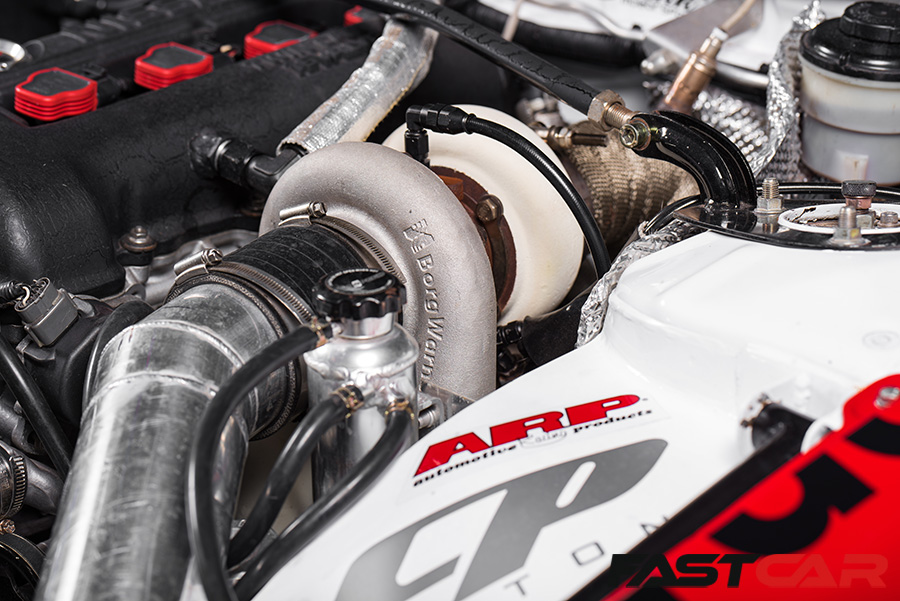
SR20DET turbo upgrades
The SR20DET leaves the factory with a variety of turbos depending on model. These vary from the smallest T25s to the T28 on the Pulsar GTI-R. The T28 was surprisingly big as it was fitted with the intention of the power being massively increased for rally use. They’re all pretty much interchangeable as they’re based on the same basic turbo frame size. While the smallest tops out at around 280bhp, the biggest around 330, they’re all good setups with no obvious winner.
Turbo fitment is really where the SR20DET shines. Unlike almost all other factory turbochargers, the SR20 factory turbos share the same footprint as countless common aftermarket turbos. This is especially true for the Garrett 25 and 28 versions of the GT/GTX/G series turbos. As a result, you can bolt on a far bigger turbo than standard with ease, and still use your standard fitment exhaust manifold and downpipe if you wish; even when making well over 400bhp.
If your goals are beyond 400 horsepower, it’s beneficial to go for a non-factory style turbo setup. There are plenty out there to choose from, with Mazworx, JDM Garage, Platinum Racing Products and more doing complete SR20DET big turbo kits. These come complete with all lines and fittings needed to bolt it all on. Most of these kits are designed around the Garrett G-Series turbos. With a G25-550, well over 500bhp has been achieved on an SR20DET while keeping great spool. However, if you want to go bigger, you can do.
As an idea of the extremes, there’s a billet SR20-based engine out there that’s running triple turbos. All of which have giant 88mm inducer compressor units, that has a goal of 3000bhp; even in initial testing it made well over 2000bhp running an insane 135psi boost!
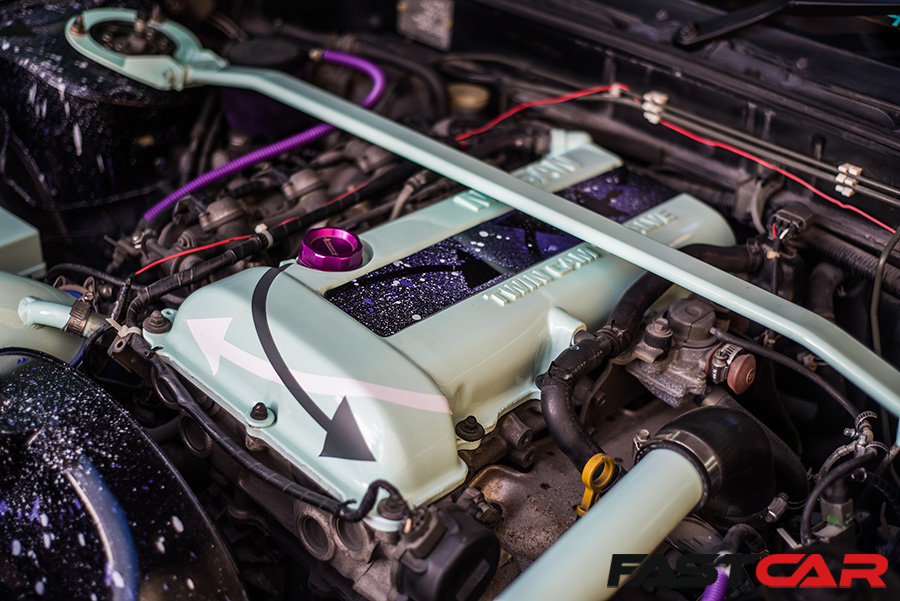
SR20DET ECU tuning
Nissans are relatively rare amongst ‘90s Japanese engines as the standard ECU can be remapped to a surprisingly high level. Even today, many people run this sort of setup on SR20DETs at big power levels. Some making 500bhp or more. The most common setup to allow this is Nistune. Once adding some additional hardware inside the case, Nistune makes the ECU fully remappable via laptop-based software It’s capable of most of the benefits of a full aftermarket ECU, but cheaper.
The next step up will be a plug-n-play aftermarket ECU that goes directly in to the factory loom. Most come with MAP and wideband Lambda wiring and connections built in and are the common upgrades.
AEM, Haltech, MaxxECU, Link, and many more, do plug-n-play SR20DET setups. Bear in mind the factory wiring loom could be over 30 years old. With most SR20s having lived a hard life, it may be wiser to get a full custom engine wiring loom. Then you can fit the ECU of your choosing with no fitment constraints or reliability issues from old wiring.
When it comes to ECUs, the number one choice should be what your tuner is happiest to use. An ECU they are most comfortable with will likely get the best results. In fact, choosing the correct tuner for your car is even more important than ECU choice. The equipment is only as good as the person who programs it!
As a reference, the insane 3000bhp capable drag SR we mentioned earlier runs a fancy Motec ECU. They are doing so to make use of all the countless inputs, outputs, and other capabilities that ECU has. For most people, even making big power, they only need a fraction of the capabilities even a more basic ECU has. Buy one that suits your needs.
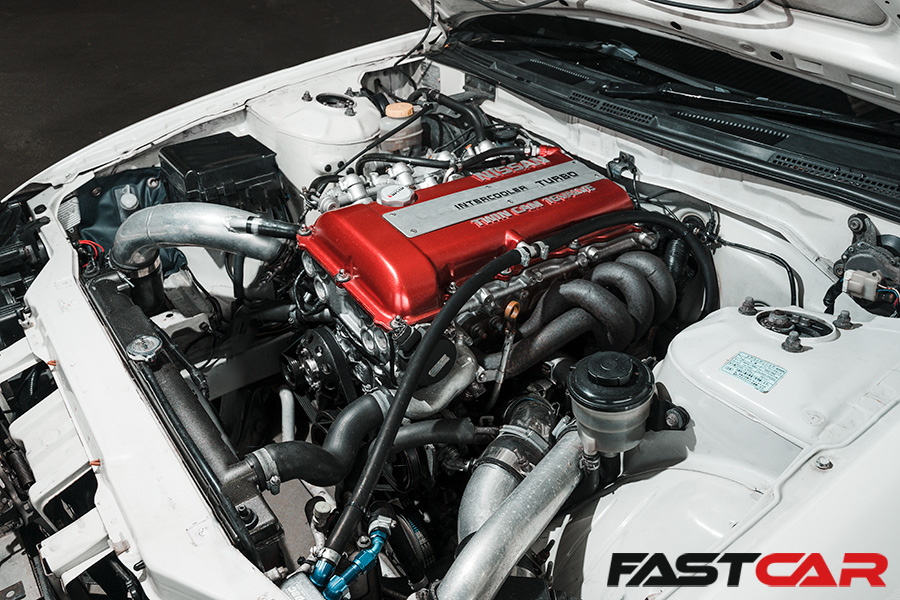
Rocker arm problems!
The only truly fundamental engine weakness of the SR20DET engine is in the valve train. More specifically, the rocker arm and shim design which actuates the valves. It’s perfectly reliable when stock, but with heavily tuned and hard used engines, the shims can come out and rockers can break. At best, it just means that’s the end of your fun until you replace the broken rockers and missing shims. At worst it can hang valves open, sending pistons crashing in to them, damaging the cylinder head, and maybe even requiring a full engine rebuild.
The attempted solutions to this over the years have been numerous, but most haven’t worked particularly well. Rocker arm stoppers put a little pre-load on the rockers when at full extension, which helps prevent it losing contact with the shim. Uprated valve springs help eliminate valve float and improve valve train control, which can help somewhat. Stronger rocker arms exist but that doesn’t solve the root of the issue. Last but certainly not least, not using a violently cutting rev limiter is a good idea to help prevent the valve train losing control.
Thankfully, getting the rocker arms modified for dual guide shims is a more effective solution. This involves some machining to the rocker arms to run two guide shims instead of the OEM setup of one guide shim and one flat shim. It’s the flat shim that causes the problem. With this setup, the rocker arm issue is for the most part solved. The SR head is then no worse than any other comparable head.
The ultimate solution is changing the hydraulic lifters for solid ones to further improve valve control. Or, you could change to the SR20VE VVL head, which runs a totally different valve train design without these issues.
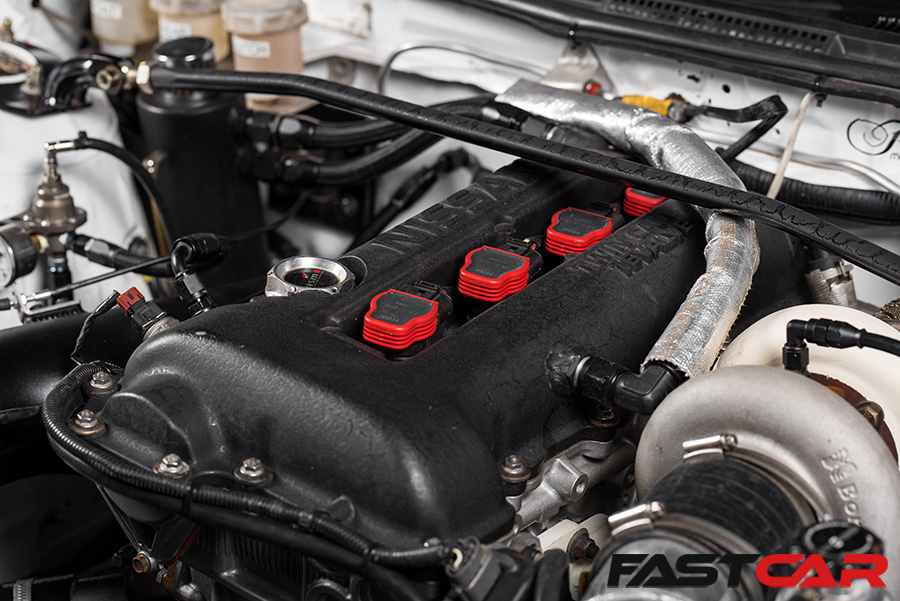
Engine internal upgrades for the SR20DET
The SR20DET has a somewhat undeserved reputation of being unreliable. This is mostly due to the aforementioned rocker arm issue, combined with general old age and use and abuse! In reality a truly fresh and well-tuned SR20DET is usually reliable even at 400bhp on the standard bottom end.
Unfortunately due to their age and life, most SRs are not like this. Even freshly rebuilt engines can often be far from optimal due to re-using many parts which may look ok, but in reality are far less effective than they used to be. Some of the most reliable tuned SR20s we’ve seen are using all new OEM parts rather than rebuilding an old engine with some aftermarket upgrades. Worn oil pumps, clogged oil ports, blocked oil pickup, and even slightly dented sumps restricting the oil pickup are all common things that end up causing engine damage on what on the face of it seems like freshly rebuilt SR20s.
Beyond 400bhp
Beyond around the 400bhp mark even a great condition stock internals engine will be on borrowed time. An upgrade to forged pistons and rods is a wise move. Some, Mazworx for example, recommend strengthening the block at this level by replacing the standard cylinders with Darton sleeves. For a 600bhp+ engine, larger half inch head studs are recommended. Beyond 800bhp, billet main caps and billet crank girdle are a must to try and keep the bottom end in one piece.
While the above setup is rated to around 1000bhp when done correctly, the closer you get to this level and beyond, a full aftermarket billet block from Bullet or Mazworx is the way to go. Proven at well over 2000bhp in conjunction with the VET head, these blocks are made to be totally road and track friendly.
Love Japanese car shows? Be sure to check out our premier Classic Japfest and Japfest Silverstone events.

